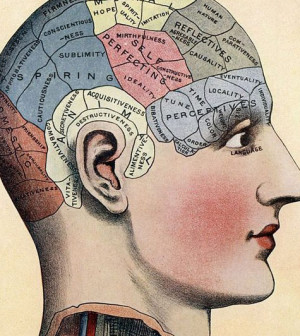- Navigating Your Midlife Crisis: Embracing New Possibilities
- City Raccoons Showing Signs of Domestication
- Mapping the Exposome: Science Broadens Focus to Environmental Disease Triggers
- One Week Less on Social Media Linked to Better Mental Health
- Your Brain Changes in Stages as You Age, Study Finds
- Some Suicide Victims Show No Typical Warning Signs, Study Finds
- ByHeart Formula Faces Lawsuits After Babies Sickened With Botulism
- Switch to Vegan Diet Could Cut Your Greenhouse Gas Emissions in Half
- Regular Bedtime Does Wonders for Blood Pressure
- Dining Alone Could Mean Worse Nutrition for Seniors
Brain Cells in Mice May Reveal Clues to Your Sighs

Scientists working with mice say that they’ve pinpointed brain cells that control sighing.
In lab experiments, the researchers found that two tiny clusters of neurons in the brain stem trigger sighs.
“Sighing appears to be regulated by the fewest number of neurons we have seen linked to a fundamental human behavior,” said study researcher Jack Feldman, a professor of neurobiology at the University of California, Los Angeles.
“One of the holy grails in neuroscience is figuring out how the brain controls behavior. Our finding gives us insights into mechanisms that may underlie much more complex behaviors,” Feldman, a member of the UCLA Brain Research Institute, said in a university news release.
The findings provide new insight into the network of brain stem cells responsible for breathing rhythm, added researcher Mark Krasnow, a professor of biochemistry at Stanford University School of Medicine in Stanford, Calif.
“Unlike a pacemaker that regulates only how fast we breathe, the brain’s breathing center also controls the type of breath we take,” he said in the news release.
“It’s made up of small numbers of different kinds of neurons. Each functions like a button that turns on a different type of breath. One button programs regular breaths, another sighs, and the others could be for yawns, sniffs, coughs and maybe even laughs and cries,” Krasnow explained.
Sighing is a vital reflex function that helps preserve lung function, the researchers noted. On average, a person sighs every five minutes, or about 12 times an hour.
“A sigh is a deep breath, but not a voluntary deep breath. It starts out as a normal breath, but before you exhale, you take a second breath on top of it,” Feldman said.
Being able to trigger sighing would benefit people who cannot breathe deeply on their own, and limiting this reflex could benefit people with anxiety disorders and other mental health conditions in which sighing becomes debilitating, the researchers said.
Whether this is in the realm of possibility isn’t known. Also, results of animal experiments often aren’t replicated in work with humans.
While this study pinpointed the brain location where sighing is controlled, the link between emotions and sighing remains a mystery.
“There is certainly a component of sighing that relates to an emotional state. When you are stressed, for example, you sigh more,” Feldman said. “It may be that neurons in the brain areas that process emotion are triggering the release of the [sigh-triggering chemicals] — but we don’t know that.”
The study was published online Feb. 8 in the journal Nature.
More information
The U.S. National Heart, Lung, and Blood Institute has more on breathing.
Source: HealthDay
Copyright © 2025 HealthDay. All rights reserved.










